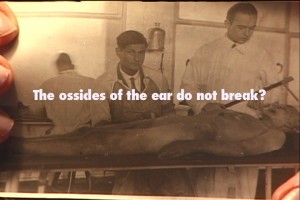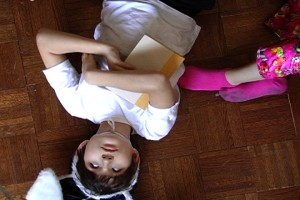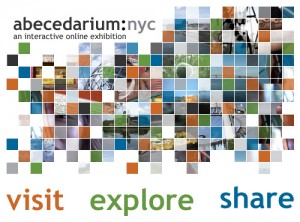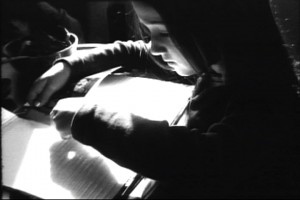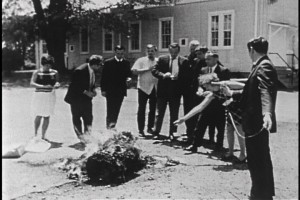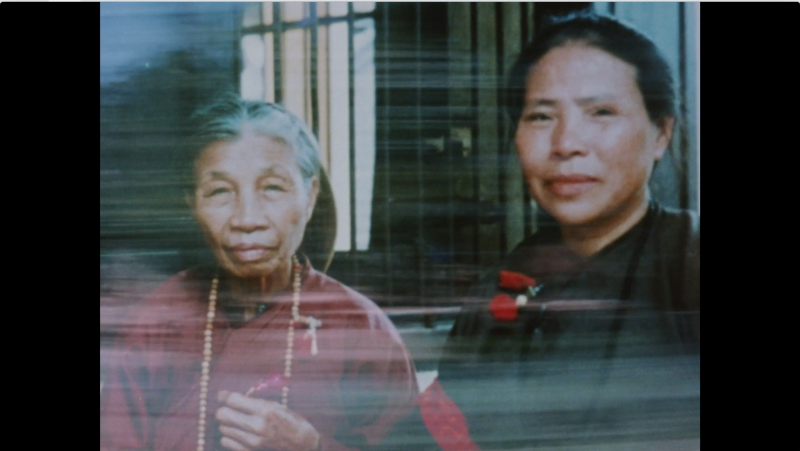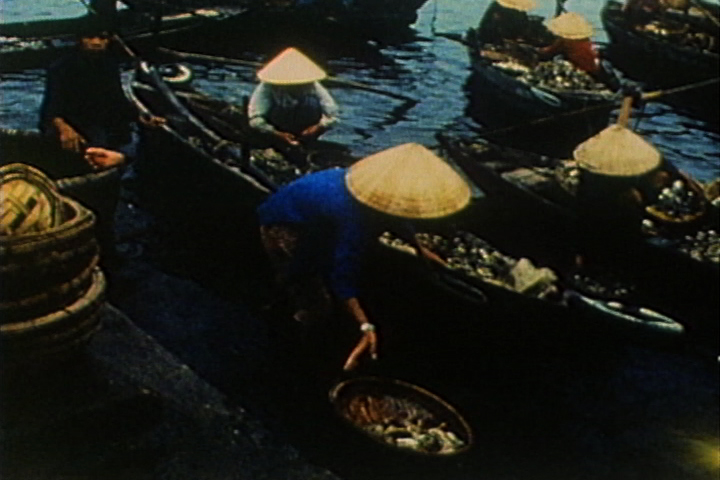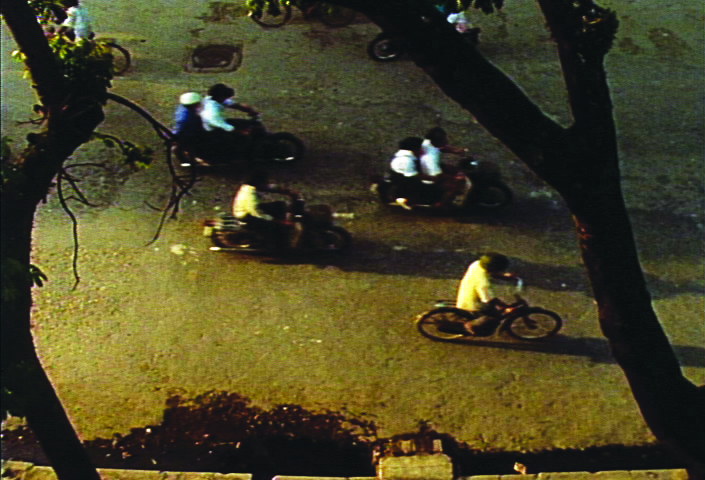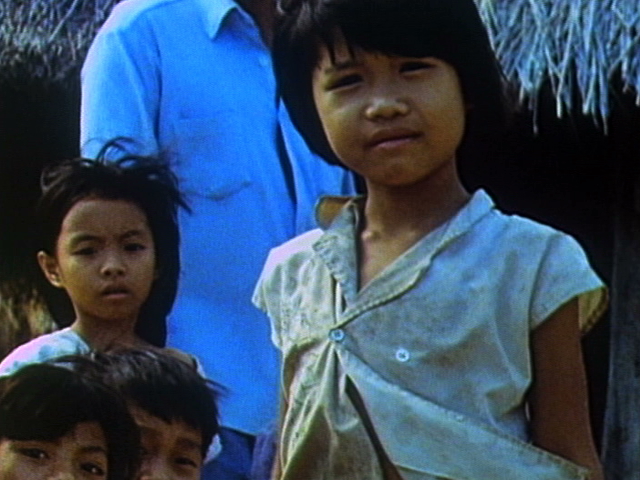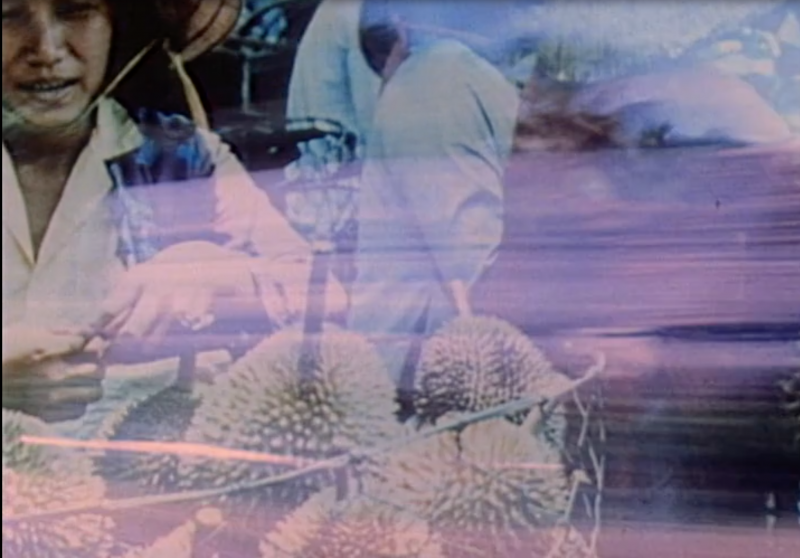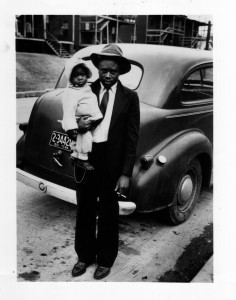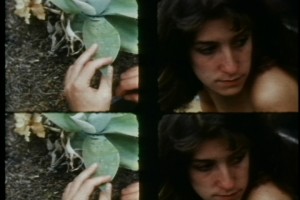The Last Happy Day
37 min. 2009 by Lynne Sachs
a portrait of a doctor who saw the worst of society and ran
The Last Happy Day is an experimental documentary portrait of Sandor (Alexander) Lenard, a Hungarian medical doctor and a distant cousin of filmmaker Lynne Sachs. In 1938 Lenard, a writer with a Jewish background, fled the Nazis to a safe haven in Rome. Shortly thereafter, the U.S. Army Graves Registration Service hired Lenard to reconstruct the bones — small and large — of dead American soldiers. Eventually he found himself in remotest Brazil where he embarked on the translation of “Winnie the Pooh” into Latin, an eccentric task that catapulted him to brief world-wide fame. Sachs’ essay film uses personal letters, abstracted war imagery, home movies, interviews, and a children’s performance to create an intimate meditation on the destructive power of war.
“A fascinating, unconventional approach to a Holocaust-related story … a frequently charming work that makes no effort to disguise an underlying melancholy.” George Robinson, The Jewish Week
“Exquisite…Sachs reclaims (Lenard’s) dignity and purpose using letters, newsreel footage, and recreations of his environment as if to channel him back from the past.” Todd Lillethun – Program Director, Chicago Filmmakers
For password to Vimeo link, please write to info@lynnesachs.com.
Premiere: New York Film Festival, 2009
Broadcast: Hungarian Public Television, Spring 2010.
Website on Alexander Lenard: http://mek.oszk.hu/kiallitas/lenard/indexeng.html
Credits:
Cast:
Sandor Lenard voice: Israel John Gerendasi
Sandor Lenard performance: Donald Moss with Ivan Moss
Winnie the Pooh Performers: Lucas Fagen, Isabel Reade, Maya and Noa Street-Sachs
Camera: Ethan Mass, Lynne Sachs
Latin Consultation: Michele Lowrie
Interviews by Lynne Sachs
Hansgerd Lenard, Dusseldorf, Germany
Andrietta Lenard, Sao Paolo, Brazil
Selected Screenings and Honors: Indiewire.Com: Nominated One of the Best “Undistributed Films” of 2009 (Phillip Lopate); Director’s Choice Award, Black Maria Film Festival 2010; San Francisco Cinematheque; Pacific Film Archive; Punto de Vista Documentary Film Festival, Spain; University of Chicago; Chicago Filmmakers; Closing Night Film Singapore Film Festival; International House University of Pennsylvania; Museum of the Moving Image, NYC, 2021; Criterion Channel Streaming.
Criterion Channel streaming premiere with 7 other films, Oct. 2021.
For inquiries about rentals or purchases please contact Canyon Cinema, Film-makers’ Cooperative, or Icarus Films. And for international bookings, please contact Kino Rebelde.

